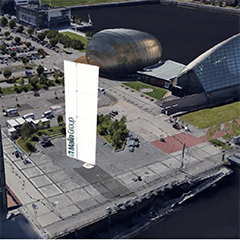In October 2020, the UK government announced a target of 1GW of floating offshore wind by 2030, which combined with a 60% target for local content set by the UK Offshore Wind Sector Deal, sets manufacturing sites around the UK with a requirement for a significant scale up in fabrication. This provides a real challenge for the sector, as well as an opportunity to innovate and collaborate. Offshore wind can be used to provide direct thrust for ships, effectively deploying wind power using 21st century materials and digital technologies, with an offshore wind turbine in effect a modern development of an 18th century windmill. Both harness wind power with modern solutions.
This article reviews recent work conducted between Smart Green Shipping and the Malin Group, who together are working to take the SGS Fully Automated Sail Technology FastRig from an engineered design into a finished fully operational product. The FastRig concept is being driven by draft new mandatory measures to cut the carbon intensity of existing ships, which have been agreed by an International Maritime Organization (IMO) working group, marking a major step forward, building on current mandatory energy efficiency requirements to further reduce greenhouse gas emissions from shipping.
These proposed amendments to the MARPOL (The International Convention for Prevention of Marine Pollution for Ships) convention requires ships to combine a technical and an operational approach to reduce their carbon intensity. This is in line with the ambition of the Initial IMO GHG Strategy, which aims to reduce carbon intensity of international shipping by 40% by 2030, compared to 2008. The amendments were developed by the seventh session of the Intersessional Working Group on Reduction of GHG Emissions from Ships, held in October 2020. FastRigs are designed to save 20% fuel and represent a significant and attractive commercial proposition regardless of regulation.



























